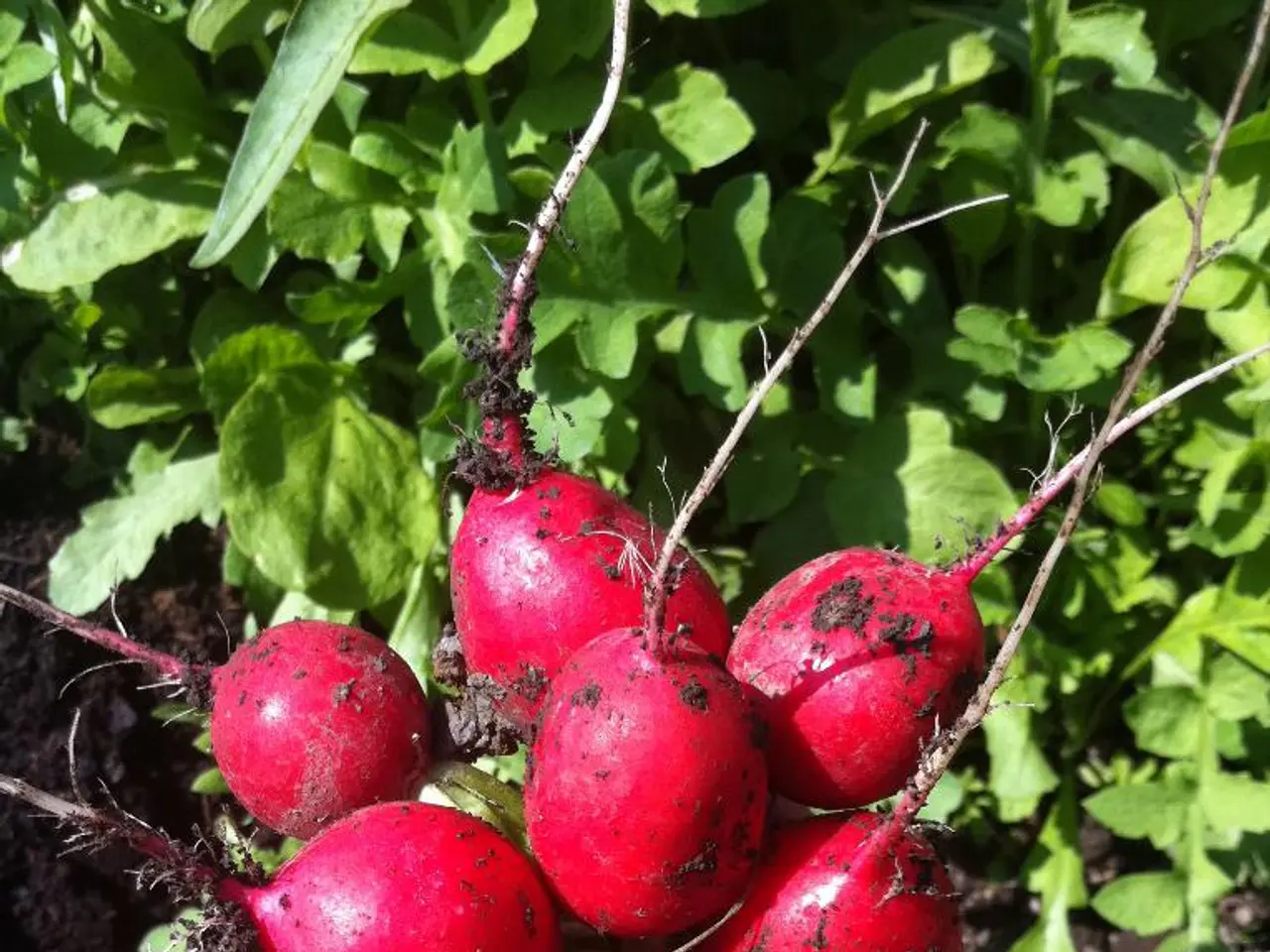Allergy season upon us? Grab your antihistamines!
A new fact sheet for Ohio gardeners, titled "Bee Nourished: Creating Pollinator-Friendly Spaces," is now available from The Ohio State University. This resource provides valuable insights into the nutritional needs of common Ohio bee species and offers practical advice on how to create gardens that support bee health.
According to the fact sheet, honey bees and native wild bees have specific nutritional requirements, primarily focusing on diverse pollen sources rich in essential amino acids and balanced in protein and lipids. While the exact preferred pollen-protein-to-lipid (P:L) ratios for all Ohio native bee species are not specified, research on bee nutrition emphasizes the importance of a balanced ratio of protein to lipids in pollen.
For honey bees, the preferred P:L ratio is around 1-to-1. These social insects rely solely on pollen (a protein source) and nectar (a carbohydrate source) for their nutrition. Worker bees need about 3.4–4.3 mg of pollen per day, with pollen containing 66–74% protein dry matter. Proper larval development requires 125–187.5 mg of pollen or 25–37.5 mg of protein.
Bumble bees, on the other hand, prefer pollen high in proteins and low in lipids. Mason bees, another native Ohio species, prefer a 3-to-1 protein-to-lipid ratio.
To optimize pollinator-friendly gardens in Ohio, the key points are:
- Grow a diverse mix of flowering plants with overlapping bloom periods, ensuring continuous pollen and nectar availability throughout the growing season.
- Include native plants known for their high-quality pollen with balanced P:L ratios to meet varied bee species needs.
- Preserve natural habitats such as meadows and forests, as they provide nesting and floral resources critical for wild bee diversity.
- Extend bloom periods into fall and leave undisturbed garden areas to help native bees survive seasonal changes.
The fact sheet also highlights the importance of plant diversity, suggesting that planting a diverse array of flowers can increase bee diversity and meet the nutritional needs of garden visitors. The bee food pyramid, available in the fact sheet, highlights different plants found in Ohio and their nutritional values.
For those interested in learning more about bee nutrition and its impact on bee foraging habits, a science bulletin titled "Bee Nourished: How Pollen Nutrition Shapes Bee Foraging Habits and What it Means for Restoration" can be found on the US Forest Service's website.
The Ohio native plants' pollen nutritional values are available in a downloadable PDF, and additional resources for bee-related information can be found at The Ohio State University bee lab, The Xerces Society for Invertebrate Conservation, and The Pollinator Partnership.
In summary, by understanding the nutritional needs of common Ohio bee species and implementing practices that support a diverse and healthy ecosystem, gardeners can create pollinator-friendly spaces that not only attract bees but also contribute to their overall health and wellbeing.
References: [1] The Ohio State University Extension. (2025-08-08). Bee Nourished: Creating Pollinator-Friendly Spaces. [2] US Forest Service. (Date Unknown). Bee Nourished: How Pollen Nutrition Shapes Bee Foraging Habits and What it Means for Restoration. [3] The Xerces Society for Invertebrate Conservation. (Date Unknown). Ohio native plants' pollen nutritional values. [4] The Pollinator Partnership. (Date Unknown). Resources about pollinators. [5] Penn State Extension. (2025-07-15). Conserving wild bees through diverse and extended floral resources. [6] Ohio State University Extension. (2025-08-12). Supporting native bees with fall blooms and undisturbed habitats. [7] Frontiers in Sustainable Food Systems. (Date Unknown). Variations in nutritional requirements across bee species. [8] Ecology and Evolution. (Date Unknown). Consistent pollen nutritional intake drives bumble bee colony growth and reproduction across different habitats. [9] Plant Systematics and Evolution. (Date Unknown). Pollen nutritional content and digestibility for animals. [10] Insects. (Date Unknown). Pollen protein: Lipid macronutrient ratios may guide broad patterns of bee species floral preferences.
- The Ohio State University Extension's fact sheet, "Bee Nourished: Creating Pollinator-Friendly Spaces," emphasizes the significance of diverse pollen sources in addressing the nutritional needs of Ohio's common bee species.
- To enhance agriculture and gardening practices, it's essential to consider bee nutrition by growing a variety of flowers with diverse pollen-protein-to-lipid ratios, as recommended in the US Forest Service's science bulletin, "Bee Nourished: How Pollen Nutrition Shapes Bee Foraging Habits and What it Means for Restoration."
- An understanding of bee nutrition can influence education-and-self-development, particularly in online-education platforms, where learning resources about bee nutrition can be found, as illustrated in The Ohio State University bee lab, The Xerces Society for Invertebrate Conservation, and The Pollinator Partnership.
- Implementing conservation measures in home-and-garden settings, such as growing a diverse range of flowering plants with overlapping bloom periods, can contribute to maintaining bee health, nutrition, and overall biodiversity.




